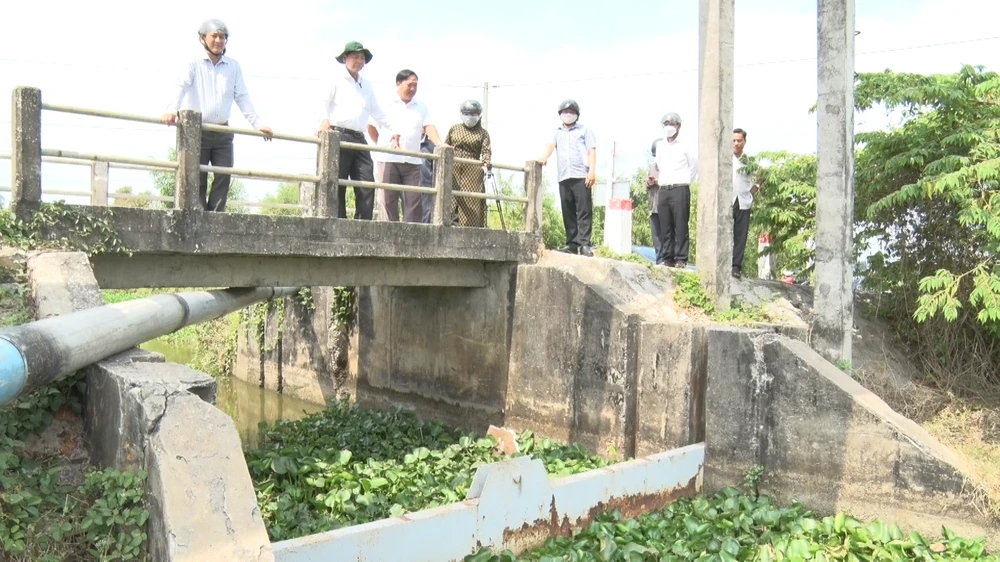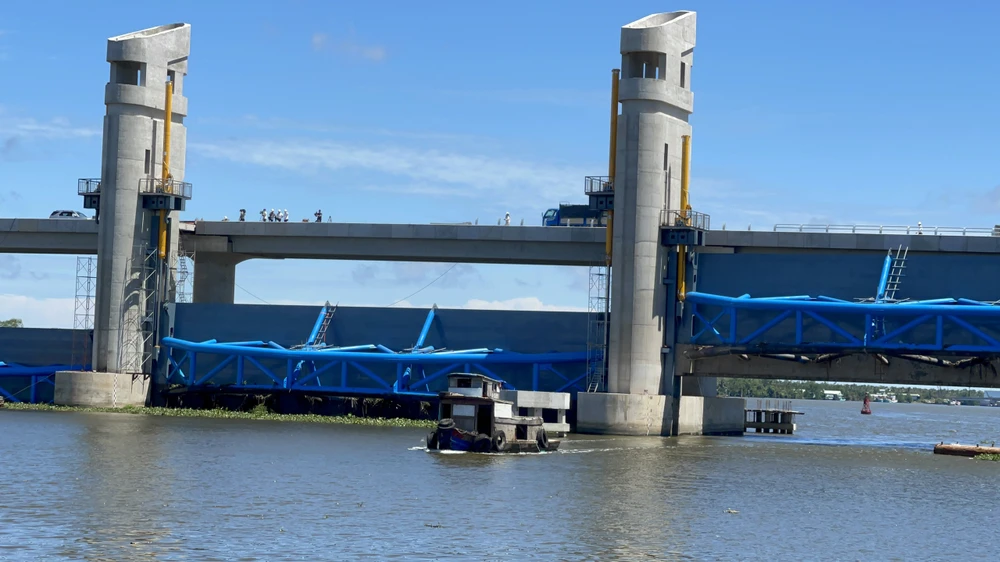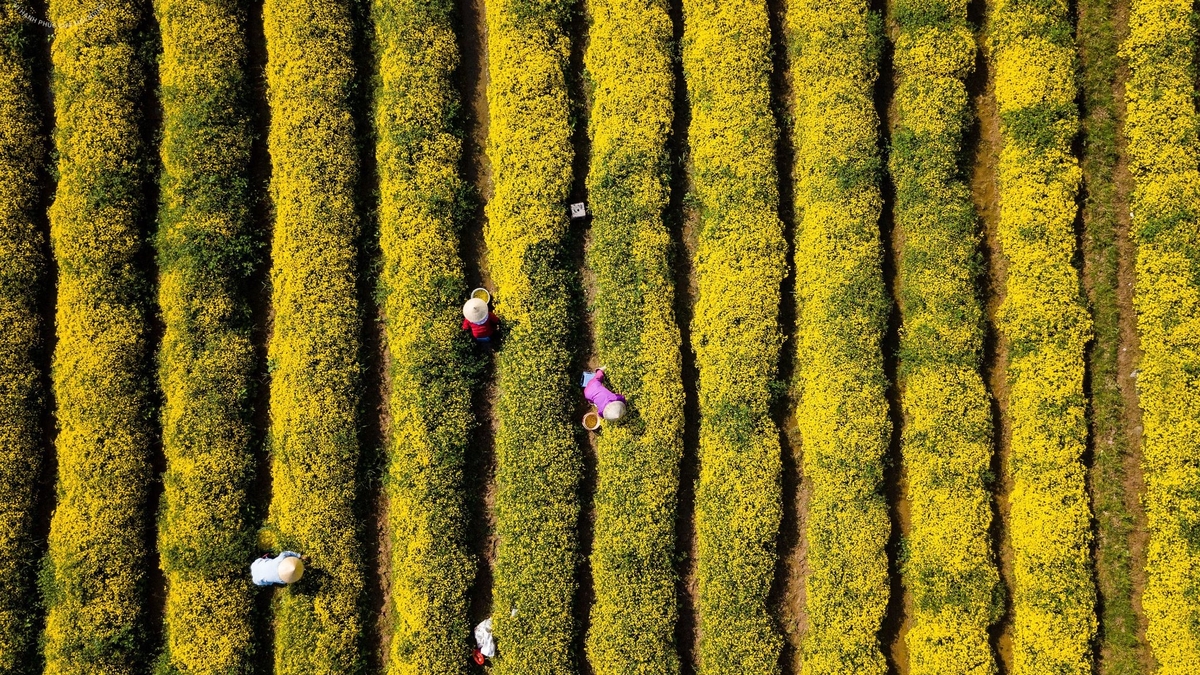According to the Vietnam Mekong River Commission, saltwater intrusion at the estuaries of the Mekong Delta has passed its peak and is showing signs of decreasing. However, due to low water levels from upstream and a late start to the rainy season, saltwater intrusion remains high and may continue to affect the area until the end of May, especially on the Vam Co Tay River. Currently, the depth of the 4‰ salinity boundary in the Mekong Delta estuaries is approximately 30km. However, salinity levels remain high in some areas.

In Hau Giang province, salinity levels in Long My district have been rising sharply in recent days, reaching 9.5‰ in some areas. Local authorities have urgently reviewed and inspected the dike and sluice gate systems, electric and diesel pumping stations, and have planned to store freshwater in the fields to prevent saltwater intrusion, protecting the planted summer-autumn rice crop, fruit orchards, and aquaculture areas.
In addition, people are advised to store water in ponds and garden ditches and use water sparingly. They should also schedule planting to avoid drought and salinity intrusion; switch to suitable cropping seasons and structures; and develop various appropriate livelihood models, especially in areas with a high risk of saltwater intrusion.

The Southern Institute of Water Resources Science recommends that the central Mekong Delta region should rationally operate salinity control and water storage facilities. When irrigating crops, people need to carefully check salinity levels, especially for fruit trees. In the coastal areas of the Mekong Delta, unusual saltwater intrusion can affect water resources and production in coastal irrigation systems such as Go Cong, northern Ben Tre, and the coastal areas of Tra Vinh . Therefore, it is necessary to prepare response plans, store and use water rationally, especially ensuring water supply for fruit-growing areas in Chau Thanh, Cho Lach, Mo Cay Bac, and Mo Cay Nam districts of Ben Tre province; and Ke Sach district of Soc Trang province.
Source: https://www.sggp.org.vn/dbscl-nhieu-noi-do-man-tang-den-95-nong-dan-can-trong-lay-nuoc-tuoi-cay-trong-post794237.html






![[Photo] Prime Minister Pham Minh Chinh presides over a meeting on private sector economic development.](/_next/image?url=https%3A%2F%2Fvphoto.vietnam.vn%2Fthumb%2F1200x675%2Fvietnam%2Fresource%2FIMAGE%2F2025%2F12%2F20%2F1766237501876_thiet-ke-chua-co-ten-40-png.webp&w=3840&q=75)


























































































Comment (0)